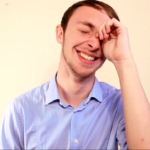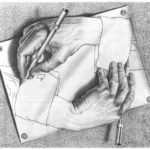Dada Dialogue
This brief is an attempt to establish a historical background for the outlined artistic work below. Of principal importance is my previous work Automatic Dialogue (2012), but also the artistic movement of Dada. So I shall begin by defining Dada and please ask that you, the reader, refer to my Automatic Dialogue work before continuing with this work. After such reflections I shall continue onto the outlined artistic work I mentioned, as being below.
A definition of Dada that I find useful is that which is summarised by this site:
“Nihilistic movement in the arts. It originated in Zürich, Switz., in 1916 and flourished in New York City, Paris, and the German cities of Berlin, Cologne, and Hannover in the early 20th century. The name, French for “hobbyhorse,” was selected by a chance procedure and adopted by a group of artists, including Jean Arp, Marcel Duchamp, Man Ray, and Francis Picabia, to symbolize their emphasis on the illogical and absurd. The movement grew out of disgust with bourgeois values and despair over World War I. The archetypal Dada forms of expression were the nonsense poem and the ready-made”
Here many of the principal elements of Dada is retained in spite of many other definitions omitting them. For example it is important to recognise its location and nihilism, some of the key practitioners and its relationship with the illogical and the absurd and very importantly the movement’s disgust of bourgeois values in reaction to the First World War. Whilst dwelling on this disgust for bourgeois values an aspect of this that should draw attention is that they called for the materialistic and commercial element of Art. “Dada was not an artistic movement in the accepted sense; it was a storm that broke over the world of art as the war did over the nations.” – spoke Hans Richter offering this element of Dada. This rejection of what is accepted as art gave way to very new forms that rejected the ideas of the Artist and his talent. For example, Marcel Duchamp constructed the ideas of ‘ready-mades’ with his work Fountain (1917) which being a traditional every day object simply exhibited within an exhibition recreates it as something else – something Dada. The shocking nature of the urinal with traditional conceptions of what art is acted as the perfect Dada refusal of Art.
In similar ways Hugo Ball’s Karawane (1916) represented a Dada form of poetry that refused to use established words. Here the creation of the sound poem can be seen to have occurred. In a similar way to my work Automatic Dialogue, this work will propose a way in which similar poetry can be performed. Dada Dialogue (2012) looks to demonstrate Dada in its function towards dialogue but also to demonstrate the importance of Hugo Ball’s performance of Karawane to Dada and indeed Dialogue and poetry. But in placing this work in a similar function to Automatic Dialogue an important relationship can be analysed between Dada and Surrealism.
Therefore the instructions below serve to offer instructions to realise a similar stance where by chance sounds are thrown at each other in a refusal of all aspects of poetry. Similar to Automatic Dialogue there is a refusal of structure and an embrace of chance, represented by the automatic nature in which they are performed. The optional starting point, like in Automatic Dialogue, serves to act as an aid to the performer in reaching the trance-like state required for such a use of chance. Such a state of mind may not come easy and so demonstrations, such as Dada Dialogue, serve to attempt the full realisation implied by the instructions set out below. It is important to consider all these things when looking at such demonstrations.
And so without further ado I offer my outlined artistic work of instructions which I call Dada Dialogue:
To perform:
Set a time limit or condition that will end the performance – for example 6 minutes or until an interruption is made.
This is optional but a starting point can be set to help start the performance such as beginning with an initial sound or word – Da, Tsu, consumate.
Clearing your mind, start pronouncing syllables without ever considering with your conscious mind what you’re saying (don’t consider the words or sentence structure just allow the sounds to come out), thus the syllables will be freed from the constraints of sentences, grammar and hopefully words and language too.
The theoretical agenda will provide an example of the function of sounds and act as a Dadaistic statement against performances that require well thought out and structured dialogue or vocal actions.
Once the condition of the ends is met, the performance shall end
An example of Dada Dialogue: Dadadadadada:
Further Reading/Additional Links:
http://www.english.upenn.edu/~jenglish/English104/tzara.html
http://pers-www.wlv.ac.uk/~fa1871/surrext.html
http://www.391.org/manifestos/191804dadaist.htm
http://www.educationdigitalmedia.com/view/18
http://www.efplfp.stealingisgood.com/dadaball.html
http://www.ubu.com/sound/tzara.html
http://www.english.emory.edu/DRAMA/TzaraGas.html
http://www.moma.org/collection/artist.php?artist_id=1634
http://www.dadart.com/dadaism/dada/035a-duchamp-cage.html
http://www.metmuseum.org/collections/search-the-collections/190017270
The Baroness Shaves Her Pubic Hair
Richter, Hans; Britt, David. Dada: Art and Anti-Art. Thames and Hudson, 1978.
Lippard, Luc (Ed). Dadas On Art: Tzara, Arp, Duchamp and Others. Dover Publications, 2009.
Tzara, Tristan. Seven Dada Manifestoes and Lampisteries. Calder Publications Ltd, 1981.







Leave a Reply